3.1 Overview
An Excel template is a report layout designed in Microsoft Excel for retrieving and formatting enterprise reporting data in Excel. Excel templates provide a set of special features for mapping data to worksheets and for performing additional processing to control how the data is output to Excel workbooks.3.1.1 Features of Excel Templates
With Excel templates you can:-
Define the structure for the data in Excel output
-
Split hierarchical data across multiple sheets and dynamically name the sheets
-
Create sheets of data that have master-detail relationships
-
Use native XSL functions in the data to manipulate it prior to rendering
-
Use native Excel functionality
3.1.2 Limitations of Excel Templates
The following are limitations of Excel templates:-
For reports that split the data into multiple sheets, images are not
supported. If the template sheet includes images, when the data is split
into multiple sheets, the images are displayed only on the first sheet.
-
BI Publisher does not provide a tool to facilitate the markup of the
template with BI Publisher tags; all tags must be manually coded. Some
features require the use of XSL and XSL Transformation (XSLT)
specifications
3.1.3 Prerequisites
Following are prerequisites for designing Excel templates:-
Microsoft Excel 2003 or later. The template file must be saved as Excel 97-2003 Workbook binary format (*.xls).
-
To use some of the advanced features, the report designer must have experience with XSL and XSLT.
-
The report data model has been created.
3.1.5 Desktop Tools
You can use the Template Viewer to preview Excel templates from your desktop.The Template Viewer is installed automatically when you install the Template Builder for Word. For information on obtaining the utility, see the topic "Installing Oracle BI Publisher Desktop Tools" in the Oracle Business Intelligence Publisher Installation Guide.
3.2 Concepts
Similar to RTF template design, Excel template design follows the paradigm of mapping fields from the XML data to positions in the Excel worksheet. Excel templates make use of features of Excel in conjunction with special BI Publisher syntax to achieve this mapping. In addition to direct mapping of data elements, Excel templates also utilize a special sheet (the XDO_METADATA sheet) to specify and map more complex formatting instructions.3.2.1 Identifying Data Field Placeholders and Groups
Excel templates use named cells and groups of cells to enable BI Publisher to insert data elements. Cells are named using BI Publisher syntax to establish the mapping back to the XML data. The cell names are also used to establish a mapping within the template between the named cell and calculations and formatting instructions that are defined on the XDO_METADATA sheet.The template content and layout must correspond to the content and hierarchy of the XML data file used as input to the report. Each group of repeating elements in the template must correspond to a parent-child relationship in the XML file. If the data is not structured to match the desired layout in Excel it is possible to regroup the data using XSLT preprocessing or the grouping functions. However, for the best performance and least complexity it is recommended that the data model be designed with the report layout in mind.
Note:
See Section 3.6, "Preprocessing the Data Using an XSL Transformation (XSLT) File" and Section 3.5.3, "Grouping Functions" for more information about these options.3.2.2 Use of Excel Defined Names
The Excel defined names feature is used to identify data fields and repeating elements. A defined name in Excel is a name that represents a cell, range of cells, formula, or constant value.
Tip:
To learn more about defined names and their usage in Microsoft Excel
2007, see the Microsoft help topic: "Define and use names in formulas."3.2.3 About the XDO_ Defined Names
The BI Publisher defined names are Excel defined names identified by the prefix "XDO_". Marking up the placeholders in the template files creates the connection between the position of the placeholders in the template and the XML data elements, and also maintains the ability to dynamically grow data ranges in the output reports, so that these data ranges can be referenced by other formula calculations, charts, and macros.3.2.4 Using Native Excel Functions
You can use the XDO_ defined names in Excel native formulas as long as the defined names are used in a simple table. When a report is generated, BI Publisher automatically adjusts the region ranges for those named regions so that the formulas calculate correctly.However, if you create nested groups in the template, then the cells generated in the final report within the grouping can no longer be properly associated to the correct name. In this case, the use of XDO_ defined names with native Excel functions cannot be supported.
3.2.5 About the XDO_METADATA Sheet
Each Excel template requires a sheet within the template workbook called "XDO_METADATA". Use this sheet to identify the template to BI Publisher as an Excel template. This sheet is also used to specify calculations and processing instructions to perform on fields or groups in the template. BI Publisher provides a set of functions to provide specific report features. Other formatting and calculations can be expressed in XSLT.It is recommended that you hide the XDO_METADATA sheet before you upload the completed template to the BI Publisher repository. This specification prevents report consumers from seeing it in the final report output.
Note:
For more information see Section 3.3.4.1, "Format of the XDO_METADATA Sheet" and Section 3.5, "Defining BI Publisher Functions."3.3 Building a Simple Template
This section demonstrates the concepts of Excel templates by walking through the steps to create a simple Excel template and testing it with the Template Viewer. This procedure follows these steps:-
Step 1: Obtain Sample XML Data from the Data Model
-
Step 2: Design the Layout in Excel
-
Step 3: Assign the BI Publisher Defined Names
-
Step 4: Prepare the XDO_METADATA Sheet
-
Step 5: Test the Template
3.3.1 Step 1: Obtain Sample XML Data from the Data Model
You need sample data in order to know the element names and the hierarchical relationships to properly mark up the template.To save data from the report viewer:
-
From the Report Editor or from the Reports page, select View.
-
If no layouts are defined for your report, then the output type will default to xml, otherwise, choose data for the output type.
-
Select Export. Save the results as an XML file to a local directory
<?xml version="1.0" encoding="UTF-8"?>
<DATA>
<DEPT>
<DEPARTMENT_ID>20</DEPARTMENT_ID>
<DEPARTMENT_NAME>Marketing</DEPARTMENT_NAME>
<EMPS>
<EMPLOYEE_ID>201</EMPLOYEE_ID>
<EMP_NAME>Michael Hartstein</EMP_NAME>
<EMAIL>MHARTSTE</EMAIL>
<PHONE_NUMBER>515.123.5555</PHONE_NUMBER>
<HIRE_DATE>1996-02-17T00:00:00.000+00:00</HIRE_DATE>
<SALARY>13000</SALARY>
</EMPS>
<EMPS>
<EMPLOYEE_ID>202</EMPLOYEE_ID>
<EMP_NAME>Pat Fay</EMP_NAME>
<EMAIL>PFAY</EMAIL>
<PHONE_NUMBER>603.123.6666</PHONE_NUMBER>
<HIRE_DATE>1997-08-17T00:00:00.000+00:00</HIRE_DATE>
<SALARY>6000</SALARY>
</EMPS>
</DEPT>
<DEPT>
...
...
</DEPT>
</DATA>
3.3.2 Step 2: Design the Layout in Excel
In Excel, determine how you want to render the data and create a sample design, as shown in Figure 3-1.The design shows a department name and a row for each employee within the department. You can apply Excel formatting to the design, such as font style, shading, and alignment. Note that this layout includes a total field. The value for this field is not available in the data and requires a calculation.
3.3.3 Step 3: Assign the BI Publisher Defined Names
To code this design as a template, mark up the cells with the XDO_ defined names to map them to data elements. The cells must be named according to the following format:-
Data elements: XDO_?element_name?
where
XDO_ is the required prefix and
?element_name? is either:
-
the XML tag name from the data delimited by "?"
-
a unique name that you use to map a derived value to the cell
-
the XML tag name from the data delimited by "?"
-
Data groups: XDO_GROUP_?group_name?
where
XDO_GROUP_ is the required prefix and ?group_name? is either
-
the XML tag name for the parent element in the XML data delimited by "?".
-
a unique name that you use to define a derived grouping logic
Note that the question mark delimiter, the group_name, and the element_name are case sensitive.
-
the XML tag name for the parent element in the XML data delimited by "?".
3.3.3.1 Applying a Defined Name to a Cell
To apply a defined name to a cell:-
Click the cell in the Excel worksheet.
-
Click the Name box at the left end of the formula bar. The default
name is displayed in the Name box. By default, all cells are named
according to position, for example: A8.
-
In the Name box, enter the name using the XDO_ prefix and the tag name from the data. For example: XDO_?EMP_NAME?
-
Press Enter.
Figure 3-2 shows the defined name for the Employee Name field entered in the Name box.
-
Repeat for each of the following data fields: DEPARTMENT_NAME, EMPLOYEE_ID, EMAIL, PHONE_NUMBER, and SALARY.
You cannot edit the Name box while you are editing the cell contents.Tip:If you navigate out of the Name box without pressing Enter, then the name that you entered is not maintained.
The name cannot be more than 255 characters in length.
-
For the total salary field, a calculation is mapped to that cell. For
now, name that cell XDO_?TOTAL_SALARY?. The calculation is added later.
The Name Manager dialog is shown in Figure 3-4 after completing all cell entries for this example:
You can review all your entries and update any errors through this dialog.
3.3.3.2 Understanding Groups
A group is a set of data that repeats for each occurrence of a particular element. In the sample template design, there are two groups:-
For each occurrence of the <EMPS> element, the employee's data
(name, e-mail, telephone, salary) is displayed in the worksheet.
-
For each occurrence of the <DEPT> element, the department name
and the list of employees belonging to that department are displayed.
Note that the data must be structured according to the groups that you want to create in the template. The structure of the data for this example
<DATA>
<DEPT>
<EMPS>
establishes the grouping desired for the report.3.3.3.3 Creating Groups in the Template
To create groups in the template:-
Highlight the cells that make up the group. In this example the cells are A8 - E8.
-
Click the Name box at the left end of the formula bar and enter the
name using the XDO_GROUP_ prefix and the tag name for the group from the
data. For example: XDO_GROUP_?EMPS?
-
Press Enter.
To define the department group, include the department name cell and all the employee fields beneath it (A5-E9) as shown in Figure 3-6.
Enter the name for this group as: XDO_GROUP_?DEPT? to match the group in the data. Note that the XDO_?TOTAL_SALARY? cell is included in the department group to ensure it repeats at the department level.
3.3.4 Step 4: Prepare the XDO_METADATA Sheet
BI Publisher requires the presence of a sheet called "XDO_METADATA" to process the template. This sheet must follow the specifications defined here.3.3.4.1 Format of the XDO_METADATA Sheet
The XDO_METADATA sheet must have the format shown in Figure 3-7.The format consists of two sections: the header section and the data constraints section. Both sections are required. In the header section, all the entries in column A must be listed, but a value is required for only one: Template Type, as shown. The Data Constraints section does not require any content, but also must be present as shown.
This procedure describes how to set up the sheet for this sample Excel template to run. For the detailed description of the functionality provided by the XDO_METADATA sheet see Section 3.5, "Defining BI Publisher Functions".
3.3.4.2 Creating the XDO_METADATA Sheet
-
Create a new sheet in the Excel workbook and name it "XDO_METADATA".
-
Create the header section by entering the following variable names in column A, one per row, starting with row 1:
-
Version
-
ARU-dbdrv
-
Extractor Version
-
Template Code
-
Template Type
-
Preprocess XSLT File
-
Last Modified Date
-
Last Modified By
-
Version
-
Skip a row and enter "Data Constraints" in column A of row 10.
-
In the header region, for the variable "Template Type" enter the value: TYPE_EXCEL_TEMPLATE
3.3.4.3 Adding the Calculation for the XDO_?TOTAL_SALARY? Field
Earlier in this procedure, you assigned the defined name XDO_?TOTAL_SALARY? to the cell that is to display the total salaries listed in the SALARY column. In this step, you add the calculation to the Data Constraints section of the XDO_METADATA sheet and map the calculation to the XDO_?TOTAL_SALARY? field.To add the calculation to the field:
-
In the Data Constraints section, in Column A, enter the defined name of the cell: XDO_?TOTAL_SALARY?
-
In Column B enter the calculation as an XPATH function. To calculate
the sum of the SALARY element for all employees in the group, enter the
following: <?sum(.//SALARY)?>
3.3.5 Step 5: Test the Template
The Template Viewer is installed when you install the Template Builder for Word; see Section 3.1.5, "Desktop Tools" for more information.To preview with the Template Viewer:
-
Open the Template Viewer:
From the Windows desktop, click Start, then Programs, then Oracle BI Publisher Desktop, then Template Viewer.
-
Click Browse to locate the folder that
contains the sample data file and template file. The data file and
template file must reside in the same folder.
-
Select Excel Templates. The Data and Template regions display all XML files and all XLS files present in the directory, as shown in Figure 3-31.
-
Click the appropriate data and template files to select them.
-
From the Output Format list, select Excel.
-
Click Start Processing.
The Template Viewer merges the sample data with the template and the output document is opened in a new workbook. Figure 3-10 shows the preview of the template with the sample data.
If the template preview is not generating the results expected, then you can use the Template Viewer to enable trace settings to view debug messages, see Section 3.7, "Debugging a Template Using the Template Viewer."
3.4 Formatting Dates
Excel cannot recognize canonical date format. If the date format in the XML data is in canonical format, that is, YYYY-MM-DDThh:mm:ss+HH:MM, you must apply a function to display it properly.One option to display a date is to use the Excel REPLACE and SUBSTITUTE functions. This option retains the full date and timestamp. If you only require the date portion in the data (YYY-MM-DD), then another option is to use the DATEVALUE function. The following example shows how to use both options.
Example: Formatting a Canonical Date in Excel
Using the Employee by Department template and data from the first example, assume you want to add the HIRE_DATE element to the layout to and display the date as shown in Column E of Figure 3-11.
To format the date:
-
Copy and paste a sample value for HIRE_DATE from the XML data into the cell that is to display the HIRE_DATE field. For example:
Copy and paste
1996-02-03T00:00:00.000-07:00
into the E8 cell.
-
Assign the cell the defined name XDO_?HIRE_DATE? to map it to the HIRE_DATE element in the data, as shown in Figure 3-12.
If you do nothing else, the HIRE_DATE value is displayed as shown. To format the date as "3-Feb-96", you must apply a function to that field and display the results in a new field.
-
Insert a new Hire Date column. This is now column F, as shown in Figure 3-13.
-
In the new Hire Date cell (F8), enter one of the following Excel functions:
-
To retain the full date and timestamp, enter:
=--REPLACE(SUBSTITUTE(E8,"T"," "),LEN(E8)-6,6,"")
-
To retain only the date portion (YYY-MM-DD), enter:
DATEVALUE(LEFT(E8,10))
-
To retain the full date and timestamp, enter:
-
Apply formatting to the cell.
Right-click the F8 cell. From the menu, select Format Cells. In the Format Cells dialog, select Date and the desired format, as shown in Figure 3-15.
The sample data in the F8 cell now displays as 3-Feb-96.
-
Hide the E column, so that report consumers do not see the canonical date that is converted.
Figure 3-16 shows column E hidden.
3.5 Defining BI Publisher Functions
BI Publisher provides a set of functions to achieve additional reporting functionality. You define these functions in the Data Constraints region of the XDO_METADATA sheet.The functions make use of Columns A, B, and C in the XDO_METADATA sheet as follows:
Use Column A to declare the function or to specify the defined name of the object to which to map the results of a calculation or XSL evaluation.
Use Column B to enter the special XDO-XSL syntax to describe how to control the data constraints for the XDO function, or the XSL syntax that describes the special constraint to apply to the XDO_ named elements.
Use Column C to specify additional instructions for a few functions.
The functions are described in the following three sections:
-
Section 3.5.1, "Reporting Functions"
-
Section 3.5.2, "Formatting Functions That Rely on Specific Data Attribute Values"
-
Section 3.5.3, "Grouping Functions"
3.5.1 Reporting Functions
Table 3-1 lists functions that you can add to a template using the commands shown and a combination of BI Publisher syntax and XSL. A summary list of the commands is shown in Table 3-1. See the corresponding section for details on usage.| Function | Commands |
|---|---|
| Section 3.5.1.1, "Splitting the Report into Multiple Sheets" | XDO_SHEET_? with XDO_SHEET_NAME_? |
| Section 3.5.1.2, "Declaring and Passing Parameters" | XDO_PARAM_?n? |
| Section 3.5.1.3, "Defining a Link" | XDO_LINK_?link object name? |
| Section 3.5.1.4, "Importing and Calling a Subtemplate" | XDO_SUBTEMPLATE_?n? |
| Section 3.5.1.5, "Referencing Java Extension Libraries" | XDO_EXT_?n? |
3.5.1.1 Splitting the Report into Multiple Sheets
Note:
Images are not supported across multiple sheets. If the template sheet
includes images, when the data is split into multiple sheets, the images
are displayed only on the first sheet.-
Use XDO_SHEET_? to define the logic by which to split the data onto a new sheet.
-
Use XDO_SHEET_NAME_? to specify the naming convention for each sheet.
| Column A Entry | Column B Entry | Column C Entry |
|---|---|---|
| XDO_SHEET_? | <?xsl_evaluation to split the data?> Example: <?.//DEPT?> |
n/a |
| XDO_SHEET_NAME_? | <?xsl_expression to name the sheet?> Example: <?concat(.//DEPARTMENT_NAME,'-',count(.//EMP_NAME))?> |
(Optional) <?original sheet name?> Example: <?Sheet3?> |
If the data is flat, then you cannot use this command unless you first preprocess the data to create the desired hierarchy. To preprocess the data, define the transformation in an XSLT file, then specify this file in the Preprocess XSLT File field of the header section of the XDO _METADATA sheet. For more information, see Section 3.6, "Preprocessing the Data Using an XSL Transformation (XSLT) File."
Use XDO_SHEET_NAME_? to define the name to apply to the sheets. In Column B enter the XSL expression to derive the new sheet name. The expression can reference a value for an element or attribute in the XML data, or you can use the string operation on those elements to define the final sheet name. This example:
<?concat(.//DEPARTMENT_NAME,'-',count(.//EMP_NAME))?>names each sheet using the value of DEPARTMENT_NAME concatenated with "-" and the count of employees in the DEPT group.
The original sheet name entry in Column C tells BI Publisher on which sheet to begin the specified sheet naming. If this parameter is not entered, BI Publisher applies the naming to the first sheet in the workbook that contains XDO_ names. You must enter this parameter if, for example, you have a report that contains summary data in the first two worksheets and the burst data should begin on Sheet3. In this case, you enter <?SHEET3?> in Column C.
Example: Splitting the data into multiple sheets
Using the employee data shown in the previous example. This example:
-
Creates a new worksheet for each department
-
Names each worksheet the name of the department with the number of employees in the department, for example: Sales-21.
-
Enter the defined names for each cell of employee data and create the group for the repeating employee data, as shown in Figure 3-17.
Note:Do not create the grouping around the department because the data is split by department. -
Enter the values that are described in Table 3-3 in the Data Constraints section of the XDO_METADATA sheet.
Figure 3-19 shows the generated report. Each department data now displays on its own sheet, which shows the naming convention specified.
3.5.1.2 Declaring and Passing Parameters
To define a parameter, use the XDO_PARAM_?n? function to declare the parameter, then use the $parameter_name syntax to pass a value to the parameter. A parameter must be defined in the data model.To declare the parameter, use the command that is described in Table 3-4.
| Column A Entry | Column B Entry |
|---|---|
| XDO_PARAM_?n? where n is unique identifier for the parameter |
<?param@begin:parameter_name;parameter_value?> where parameter_name is the name of the parameter from the data model and parameter_value is the optional default value. For example: <?param@begin:Country;US?> |
| Column A Entry | Column B Entry |
|---|---|
| XDO_PARAM_?parameter_name? For example: XDO_PARAM_?Country? |
<?$parameter_name?>. For example: <?$Country?> |
Example: Defining and Passing a Parameter
To declare and reference a parameter named Country:
-
In the template sheet, mark the cell with a defined name. In the
figure below, the cell has been marked with the defined name
XDO_?Country?
-
In the hidden sheet assign that cell the parameter value, as shown in Figure 3-21.
3.5.1.3 Defining a Link
Use the XDO_LINK_? command to define a hyperlink for any data cell, as described in Table 3-6.Example: Defining a Link
| Column A Entry | Column B Entry |
|---|---|
| XDO_LINK_?cell object name? For example: XDO_LINK_?INVOICE_NO? |
<xsl statement to build the dynamic URL> For example: <xsl:value-of select="concat('https://server.company.com/documents/invoice_print.show?c_rptno=',./INVOICE_NO)"/> |
To generate a report that creates a dynamic link to each invoice:
-
In the template sheet, assign the cell that is to display the INVOICE_NO the XDO defined name: XDO_?INVOICE_NO?, as shown in Figure 3-22.
-
In the XDO_METADATA sheet, enter the appropriate values, as described in Table 3-7:
The entries in Excel are shown inFigure 3-23.Column A Entry Column B Entry XDO_LINK_?INVOICE_NO? <xsl:value-of select="concat('https://server.company.com/documents/invoice_print.show?c_rptno=',./INVOICE_NO)"/>
3.5.1.4 Importing and Calling a Subtemplate
Use these commands to declare XSL subtemplates that you can then call and reference in any of the XDO_ commands.
Note:
The Template Viewer does not support preview for templates that import subtemplates.| Column A Entry | Column B Entry |
|---|---|
| XDO_SUBTEMPLATE_?n? where n is a unique identifier. For example: XDO_SUBTEMPLATE_?1? | <xsl:import href="xdoxsl:///path to subtemplate"/> For example: <xsl:import href="http://server.company.com:8080/subtemplates/PaymentsSummary-SubTemplate.xsl"/> |
| Column A Entry | Column B Entry |
|---|---|
| XDO_?cell object name? | <xsl:call-template name="template_name"> </xsl:call-template> |
Assume you have the following subtemplate to evaluate the value of a parameter named pPayType and based on the value, will return a string that indicates the payment type:
<?xml version="1.0" encoding="utf-8"?>
<xsl:stylesheet version="2.0"
xmlns:xsl="http://www.w3.org/1999/XSL/Transform">
<xsl:template match="/">
</xsl:template>
<xsl:template name="BRM_PAY_TYPES">
<xsl:param name="pPayType" select="string('ALL')"/>
<xsl:choose>
<xsl:when test="$pPayType = '0'">UNDEFINED</xsl:when>
<xsl:when test="$pPayType=string('10000')">PREPAID</xsl:when>
<xsl:when test="$pPayType=string('10001')">INVOICE</xsl:when>
<xsl:when test="$pPayType=string('10003')">CREDIT CARD</xsl:when>
<xsl:when test="$pPayType=string('10005')">DIRECT DEBIT</xsl:when>
<xsl:when test="$pPayType=string('10011')">CASH</xsl:when>
<xsl:when test="$pPayType=string('10012')">CHECK</xsl:when>
<xsl:when test="$pPayType=string('ALL')">ALL</xsl:when>
</xsl:choose>
</xsl:template>
</xsl:stylesheet>
In the Excel template, you have defined a field with the XDO Defined
Name XDO_?TYPE?, which is populated based on the string returned from
code performed in the subtemplate, as shown in Figure 3-25.Enter the commands shown in Table 3-10 in the Data Constraints region.
| Column A Entry | Column B Entry |
|---|---|
| XDO_SUBTEMPLATE_?1? | <xsl:import href="http://server.company.com:8080/subtemplates/PaymentsSummary-SubTemplate.xsl"/> |
| XDO_?TYPE? | <xsl:call-template name="BRM_PAY_TYPES"> <xsl:with-param name="pPayType" select="string('10000')"/> </xsl:call-template> |
The XDO_?TYPE? cell entry maps the results of the subtemplate processing entered in Column B.
3.5.1.5 Referencing Java Extension Libraries
You can include the reference to a Java extension library in the template and then call methods from this library to perform processing in the template. Use the command shown in Table 3-11 to reference the Java extension libraries.| Column A Entry | Column B Entry |
|---|---|
| XDO_EXT_?n? where n is a unique identifier. Example: XDO_EXT?1? | <?namespace:xmlns:bipext="extension library"?> Example: <?namespace:xmlns:bipext="http://www.company.com/XSL/Transform/java/ company.com.xmlpublisher.reports.BIPExtension"?> |
Example: Calling a Java Extension Library
Assume the extension library includes the following two methods that you want to call in the template:
-
bipext:infTimeToStr()
-
bipext:infStrToTimet()
| Column A Entry | Column B Entry |
|---|---|
| XDO_?PARAM_START_DATE? | <xsl:value-of select="bipext:infTimeToStr(bipext:infStrToTimet((.//PARAM_START_DATE)[1],2),3)" |
3.5.2 Formatting Functions That Rely on Specific Data Attribute Values
The following commands require that specific formatting attributes be present in the XML data file. A summary list of the commands is shown in Table 3-13. See the corresponding section for details on usage.| Function | Command |
|---|---|
| Section 3.5.2.1, "Defining Border and Underline Styles" | XDO_STYLE_n_?cell object name? |
| Section 3.5.2.2, "Skipping a Row" | XDO_SKIPROW_?cell object name? |
3.5.2.1 Defining Border and Underline Styles
While you can define a consistent style in the template using Excel formatting, the XDO_STYLE command enables you to define a different style for any data cell dynamically based on the XML data.With the XDO_STYLE command you specify the cell to which to apply the style, the logic to determine when to apply the style, and the style type to apply. The style value must be present in the XML data. Table 3-14 provides examples.
| Column A Entry | Column B Entry | Column C Entry |
|---|---|---|
| XDO_STYLE_n_?cell_object_name? For example: XDO_STYLE_1_?TOTAL_SALARY? |
<xsl evaluation that returns a supported value> For example: <xsl:value-of select=".//TOTAL_SALARY/@borderStyle"/> |
Style type For example: BottomBorderStyle |
| Style Type | Supported Values (Must be in returned by evaluation in Column B) | Supported Types (Enter in Column C) |
|---|---|---|
| Normal | BORDER_NONE BORDER_THIN BORDER_MEDIUM BORDER_DASHED BORDER_DOTTED BORDER_THICK BORDER_DOUBLE BORDER_HAIR BORDER_MEDIUM_DASHED BORDER_DASH_DOT BORDER_MEDIUM_DASH_DOT BORDER_DASH_DOT_DOT BORDER_MEDIUM_DASH_DOT_DOT BORDER_SLANTED_DASH_DOT |
BottomBorderStyle TopBorderStyle LeftBorderStyle RightBorderStyle DiagonalLineStyle |
| Style Type | Supported Value (Must be in returned by evaluation in Column B) | Supported Types (Enter in Column C) |
|---|---|---|
| Normal | When you set Color Style, give the value in RRBBGG hex format, for example: borderColor="0000FF" |
BottomBorderColor TopBorderColor LeftBorderColor RightBorderColor DiagonalLineColor |
| Style Type | Supported Values (Must be in returned by evaluation in Column B) | Supported Type (Enter in Column C) |
|---|---|---|
| Underline | UNDERLINE_NONE UNDERLINE_SINGLE UNDERLINE_DOUBLE UNDERLINE_SINGLE_ACCOUNTING UNDERLINE_DOUBLE_ACCOUNTING |
UnderlineStyle |
Example: Defining Styles
To apply a style in a template, the style value must be present in the data. In this example, a border style and an underline style are applied to the DEPT_TOTAL_SALARY field shown in the Excel template.
For this example, the following data is used. Note that the DEPT_TOTAL_SALARY element in the data has these attributes defined:
-
borderStyle
-
underLineStyle
-
borderColor
<?xml version="1.0" encoding="UTF-8"?>
<EMPLOYEES>
<G_DEPT>
<DEPARTMENT_ID>10</DEPARTMENT_ID>
<DEPARTMENT_NAME>Administration</DEPARTMENT_NAME>
<LIST_G_EMP>
<G_EMP>
<EMPLOYEE_ID>200</EMPLOYEE_ID>
<EMP_NAME>Jennifer Whalen</EMP_NAME>
<EMAIL>JWHALEN</EMAIL>
<PHONE_NUMBER>515.123.4444</PHONE_NUMBER>
<HIRE_DATE>1987-09-17T00:00:00.000-06:00</HIRE_DATE>
<SALARY>4400</SALARY>
</G_EMP>
</LIST_G_EMP>
<DEPT_TOTAL_SALARY borderStyle="BORDER_DOUBLE"
underLineStyle="UNDERLINE_DOUBLE_ACCOUNTING"
borderColor="0000FF">4400</DEPT_TOTAL_SALARY> </G_DEPT> <G_DEPT> <DEPARTMENT_ID>20</DEPARTMENT_ID> <DEPARTMENT_NAME>Marketing</DEPARTMENT_NAME> <LIST_G_EMP> <G_EMP> <EMPLOYEE_ID>201</EMPLOYEE_ID> <EMP_NAME>Michael Hartstein</EMP_NAME> <EMAIL>MHARTSTE</EMAIL> <PHONE_NUMBER>515.123.5555</PHONE_NUMBER> <HIRE_DATE>1996-02-17T00:00:00.000-07:00</HIRE_DATE> <SALARY>13000</SALARY> </G_EMP> <G_EMP> <EMPLOYEE_ID>202</EMPLOYEE_ID> <EMP_NAME>Pat Fay</EMP_NAME> <EMAIL>PFAY</EMAIL> <PHONE_NUMBER>603.123.6666</PHONE_NUMBER> <HIRE_DATE>1997-08-17T00:00:00.000-06:00</HIRE_DATE> <SALARY>6000</SALARY> </G_EMP> </LIST_G_EMP> <DEPT_TOTAL_SALARY borderStyle="BORDER_DOUBLE"
underLineStyle="UNDERLINE_DOUBLE_ACCOUNTING"
borderColor="0000FF">19000</DEPT_TOTAL_SALARY>
</G_DEPT>
...
</EMPLOYEES>
To define a style:-
In the Excel template, assign the defined name
XDO_?DEPT_TOTAL_SALARY? to the field that is to display the
DEPT_TOTAL_SALARY from the data, as shown in Figure 3-27.
-
In the XDO_METADATA sheet, enter the following:
-
To define the top border style, use the entries shown in Table 3-18.
The entry in Column A maps this style command to the cell assigned the name XDO_?DEPT_TOTAL_SALARY?Column A Entry Column B Entry Column C Entry XDO_STYLE_1_?DEPT_TOTAL_SALARY? <xsl:value-of select=".//DEPT_TOTAL_SALARY/@borderStyle"/> TopBorderStyle
The entry in Column B retrieves the style value from the attribute borderStyle of the DEPT_TOTAL_SALARY element. Note from the sample data that the value for borderStyle is "BORDER_DOUBLE".
The entry in Column C tells BI Publisher to apply a TopBorderStyle to the cell.
-
To define the top border color, use the entries shown in Table 3-19.
The entry in Column A maps this style command to the cell assigned the name XDO_?DEPT_TOTAL_SALARY?Column A Entry Column B Entry Column C Entry XDO_STYLE_2_?DEPT_TOTAL_SALARY? <?.//DEPT_TOTAL_SALARY/@borderColor?> TopBorderColor
The entry in Column B retrieves the style value from the attribute borderColor of the DEPT_TOTAL_SALARY element. Note from the sample data that the value for borderColor is "0000FF" (blue).
The entry in Column C tells BI Publisher to apply a TopBorderColor to the cell.
-
To define the underline style, use the entries shown in Table 3-20.
The entry in Column A maps this style command to the cell assigned the name XDO_?DEPT_TOTAL_SALARY?Column A Entry Column B Entry Column C Entry XDO_STYLE_3_?DEPT_TOTAL_SALARY? <?.//DEPT_TOTAL_SALARY/@underLineStyle?> UnderlineStyle
The entry in Column B retrieves the style value from the attribute underLineStyle of the DEPT_TOTAL_SALARY element. Note from the sample data that the value for underLineStyle is "UNDERLINE_DOUBLE_ACCOUNTING".
The entry in Column C tells BI Publisher to apply the UnderLineStyle to the cell.
-
To define the top border style, use the entries shown in Table 3-18.
When you run the report, the style commands are applied to the XDO_?DEPT_TOTAL_SALARY? cell, as shown in Figure 3-29.
3.5.2.2 Skipping a Row
Use the XDO_SKIPROW command to suppress the display of a row of data in a table when the results of an evaluation defined in Column B return the case insensitive string "True". Example entries are shown in Table 3-21.| Column A Entry | Column B Entry |
|---|---|
| XDO_SKIPROW_?cell_object_name? For example: XDO_SKIPROW_?EMPLOYEE_ID? |
<xsl evaluation that returns the string "True"/> For example: <xsl:if test="string-length(./EMPLOYEE_ID/@MANAGER) != 0"> <xsl:value-of select="./EMPLOYEE_ID/@MANAGER"/> </xsl:if> |
In this example, the Excel template suppresses the display of the row of employee data when the EMPLOYEE_ID element includes a "MANAGER" attribute with the value "True".
Assume data as shown below. Note that the EMPLOYEE_ID element for employee Michael Hartstein has the MANAGER attribute with the value "True". The other EMPLOYEE_ID elements in this set do not have the attribute.
<?xml version="1.0" encoding="UTF-8"?>
<EMPLOYEES>
<G_DEPT>
<DEPARTMENT_ID>20</DEPARTMENT_ID>
<DEPARTMENT_NAME>Marketing</DEPARTMENT_NAME>
<LIST_G_EMP>
<G_EMP>
<EMPLOYEE_ID MANAGER="TRUE">201</EMPLOYEE_ID>
<EMP_NAME>Michael Hartstein</EMP_NAME>
<EMAIL>MHARTSTE</EMAIL>
<PHONE_NUMBER>515.123.5555</PHONE_NUMBER>
<HIRE_DATE>1996-02-17T00:00:00.000-07:00</HIRE_DATE>
<SALARY>13000</SALARY>
</G_EMP>
<G_EMP>
<EMPLOYEE_ID>202</EMPLOYEE_ID>
<EMP_NAME>Pat Fay</EMP_NAME>
<EMAIL>PFAY</EMAIL>
<PHONE_NUMBER>603.123.6666</PHONE_NUMBER>
<HIRE_DATE>1997-08-17T00:00:00.000-06:00</HIRE_DATE>
<SALARY>6000</SALARY>
</G_EMP>
<G_EMP>
<EMPLOYEE_ID>652</EMPLOYEE_ID>
<EMP_NAME>William Morgan</EMP_NAME>
<EMAIL>WMORGAN</EMAIL>
<PHONE_NUMBER>219.123.7776</PHONE_NUMBER>
<HIRE_DATE>1994-10-17T00:00:00.000-06:00</HIRE_DATE>
<SALARY>8000</SALARY>
</G_EMP>
</LIST_G_EMP>
</G_DEPT>
...
</EMPLOYEES>
To suppress the display of the row of the employee data when the MANAGER attribute is set to "True", enter the entries shown in Table 3-22 in the Data Constraints section.| Column A Entry | Column B Entry |
|---|---|
| XDO_SKIPROW_?EMPLOYEE_ID? | <xsl:if test="string-length(./EMPLOYEE_ID/@MANAGER)!= 0"> <xsl:value-of select="./EMPLOYEE_ID/@MANAGER"/> </xsl:if> |
3.5.3 Grouping Functions
Use the functions shown in Table 3-23 to create groupings of data in the template.| Function | Command |
|---|---|
| Section 3.5.3.1, "Grouping the data" | XDO_GROUP_?group element? |
| Section 3.5.3.2, "Regrouping the Data" | XDO_REGROUP_? |
3.5.3.1 Grouping the data
Use the XDO_GROUP command to group flat data when the layout requires a specific data grouping, for example, to split the data across multiple sheets. Example entries are shown in Table 3-24.| Column A Entry | Column B Entry | Column C Entry |
|---|---|---|
| XDO_GROUP_?group element? For example: XDO_GROUP_?STATE_GROUP? |
<xsl beginning groupng logic/> For example: <xsl:for-each-group select="current-group()" group-by="./STATE"> <xsl:for-each-group select="current-group()" group-by="./RESOURCE_NAME"> <xsl:for-each select="current-group()"> |
<xsl ending groupng tags/> For example: </xsl:for-each> <xsl:for-each-group> <xsl:for-each-group> |
3.5.3.2 Regrouping the Data
The XDO_REGROUP regroups the data by declaring the structure using the defined names. It does not require the XSLT logic. Entries are shown in Table 3-25.| Column A Entry | Column B Entry |
|---|---|
| XDO_REGROUP_? | XDO_REGROUP_?UniqueGroupID?levelName?groupByName?sortByName?sortByName?sortByName? where
|
| Column A Entry | Column B Entry |
|---|---|
| XDO_REGROUP_? | XDO_REGROUP_?PAYMENTSUMMARY_Q1?PAYMENTSUMMARY_Q1?PAY_TYPE_NAME? |
| Column A Entry | Column B Entry |
|---|---|
| XDO_REGROUP_? | XDO_REGROUP_?COUNTRYGRP?XDO_CURRGRP_?COUNTRY? |
| Column A Entry | Column B Entry |
|---|---|
| XDO_REGROUP_? | XDO_REGROUP_?STATEGRP?XDO_CURRGRP_?STATE? |
3.6 Preprocessing the Data Using an XSL Transformation (XSLT) File
For the best performance, you should design the data model to perform as much of the data processing as possible. When it is not possible to get the required output from data engine, you can preprocess the data using an XSLT file that contains the instructions to transform the data. Some sample use cases may be:-
To create groups to establish the necessary hierarchy to support the desired layout
-
To add style attributes to data elements
-
To perform complex data processing logic that may be impossible in the Excel Template or undesirable for performance reasons
Note:
The Template Viewer does not support preview for templates that require XSLT preprocessing.-
Create the file and save as .xsl.
-
Upload the file to the report definition in the BI Publisher repository, as you would a template:
-
Navigate to the report in the repository.
-
Click Edit.
-
Click Layouts.
-
Click Browse to locate the XSL file and then click Upload.
-
Save the report definition.
-
Navigate to the report in the repository.
-
In the Excel template, on the XDO_METADATA sheet, in the Header section, enter the file name for the Preprocess XSLT File parameter. For example: SplitByBrand.xsl
Note:
For testing purposes, you can create a Layout for the XSL file to enable
you to view the intermediate data when the XSL template is applied to
the data. To create the Layout:
-
With Layouts selected in the left pane, click New.
-
In the Layout General Settings pane, enter the following:
-
Name - enter a name for this layout.
-
Template - select the XSL template that you uploaded.
-
Template Type - select XSL Stylesheet (XML)
-
Output Format - All Formats
-
Name - enter a name for this layout.
-
Click Save.
-
Run the report, applying the Excel template. If the output is not as
expected in the Report Viewer, select the XSL template in the Report
Viewer to view the preprocessed output.
3.7 Debugging a Template Using the Template Viewer
If the template preview is not generating the results expected, then you can use the Template Viewer to enable trace settings to view debug messages. The Template Viewer also enables you to save and view the intermediate XSL file that is generated after the sample data and template are merged in the XSL-FO processor. If you are familiar with XSL, then this can be a very useful debugging tool.The Template Viewer is installed when you install the Template Builder for Word; see Section 3.1.5, "Desktop Tools" for more information.
Note:
The Template Viewer does not support preview for templates that require XSLT preprocessing.-
Open the Template Viewer:
From the Windows desktop, click Start, then Programs, then Oracle BI Publisher Desktop, then Template Viewer.
-
Click Browse to locate the folder that
contains the sample data file and template file. The data file and
template file must reside in the same folder.
-
Select Excel Templates. The Data and Template regions display all .xml files and all .xls files present in the directory, as shown in Figure 3-31.
-
Click the appropriate data and template files to select them.
-
Select the log level.
-
From the Output Format list, select Excel.
-
Click Start Processing.
The Template Viewer merges the selected data with the selected template and spawn the appropriate viewer. View any log messages in the message box, as shown in Figure 3-32.
-
In the Template Viewer, select the data and template files and choose Excel output.
-
On the Tools menu, select Generate XSL file from and then choose Excel Template, as shown in Figure 3-33.
-
At the prompt, save the generated XSL file.
-
Navigate to the saved location and open the XSL file in an appropriate viewer.
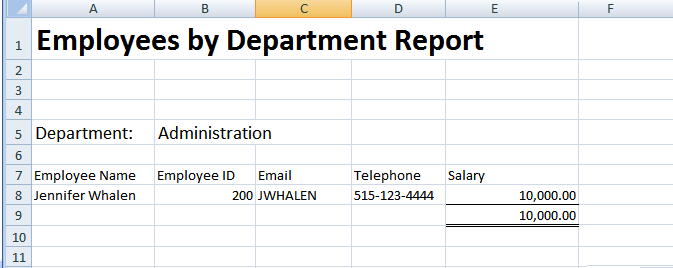
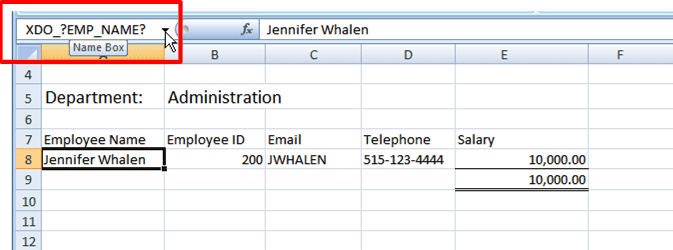

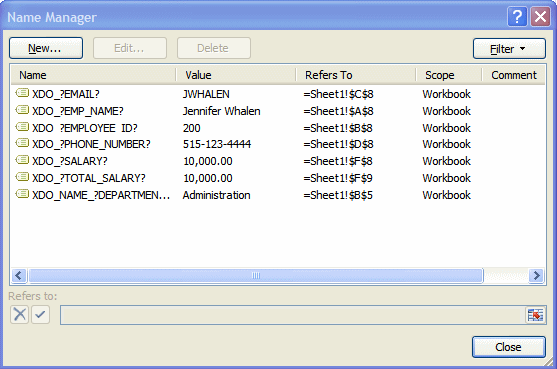
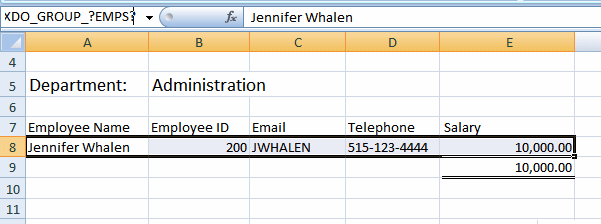
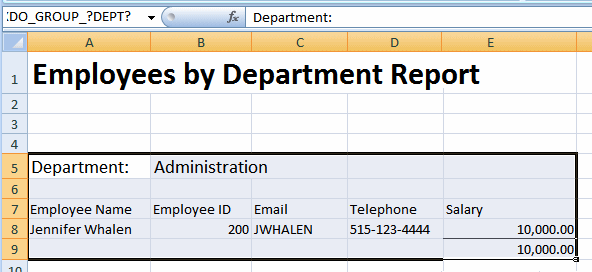
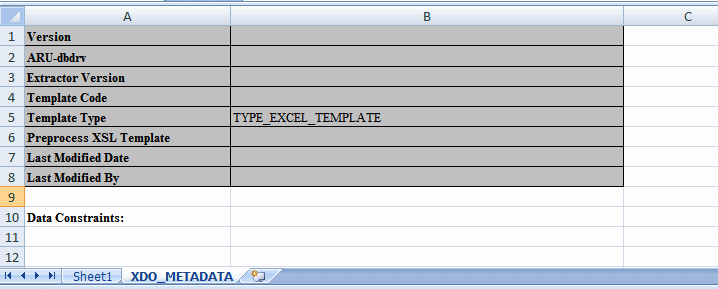
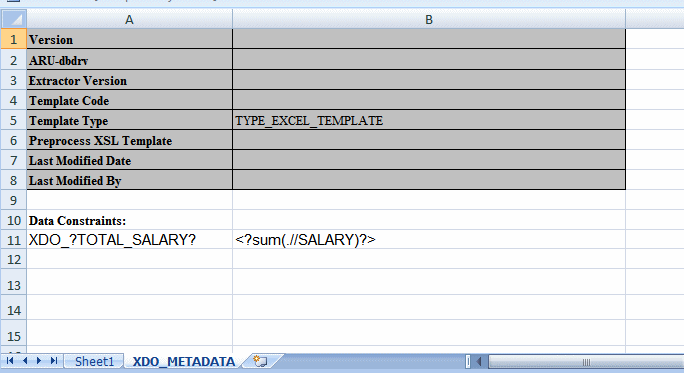
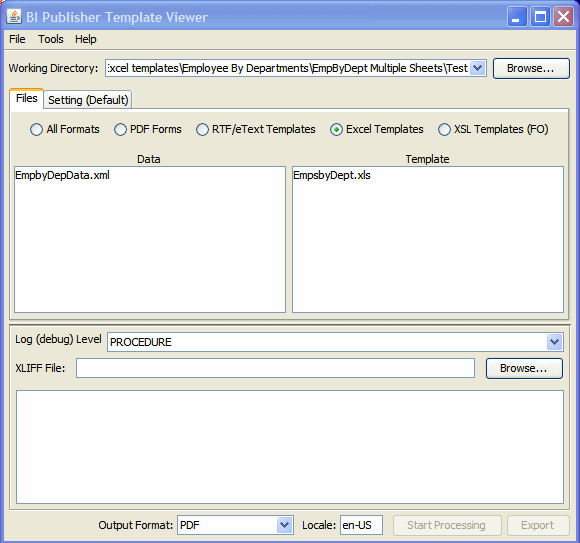
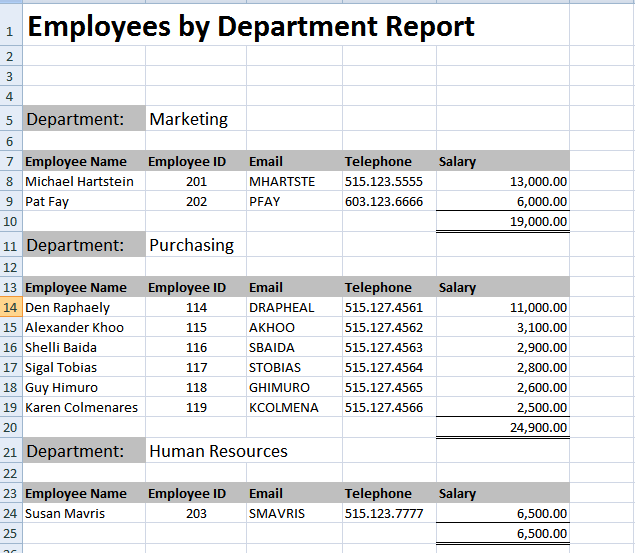
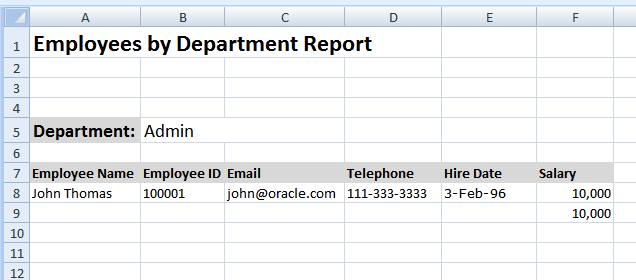
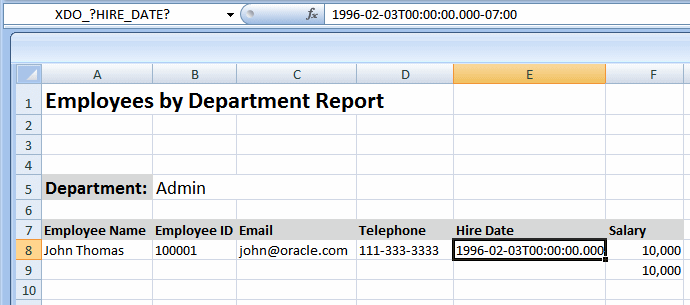

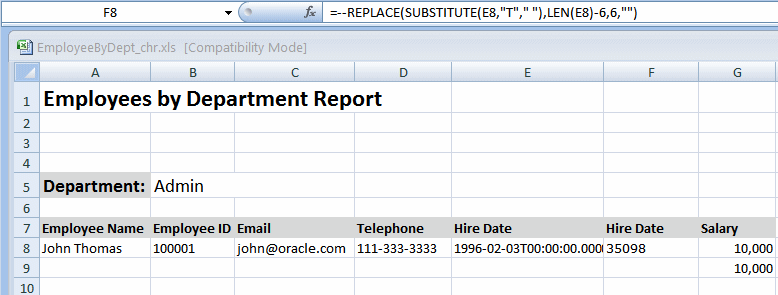
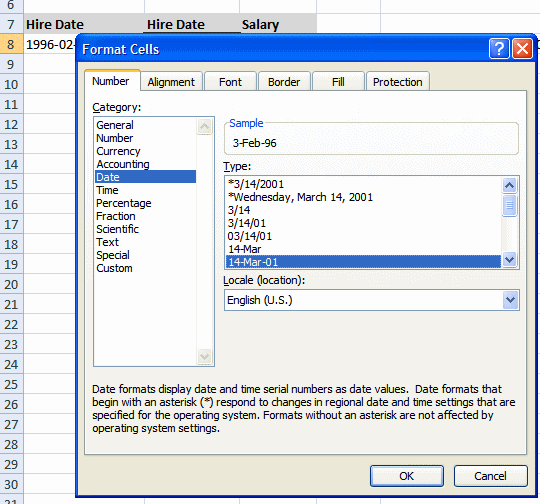
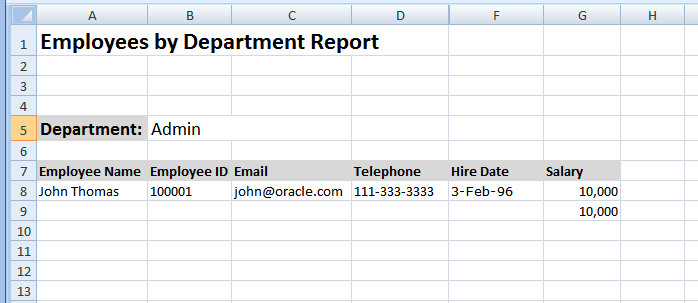

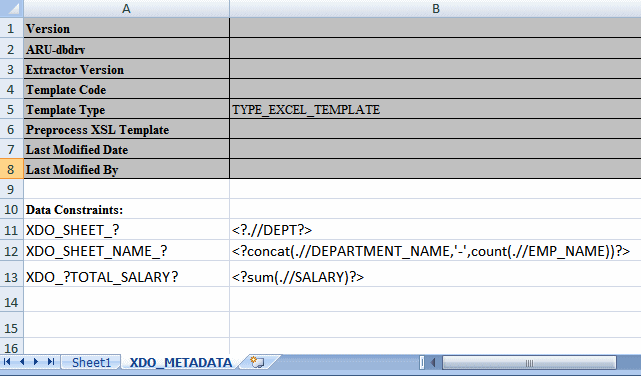
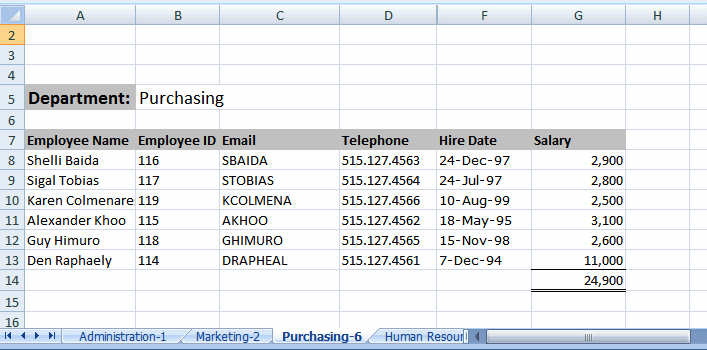
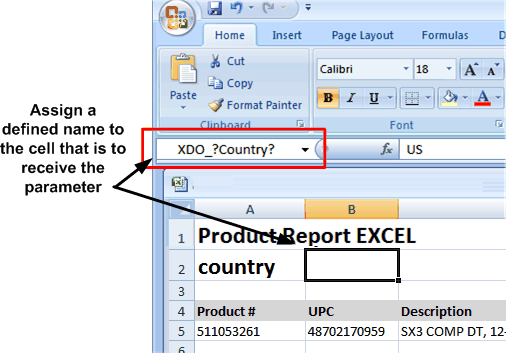
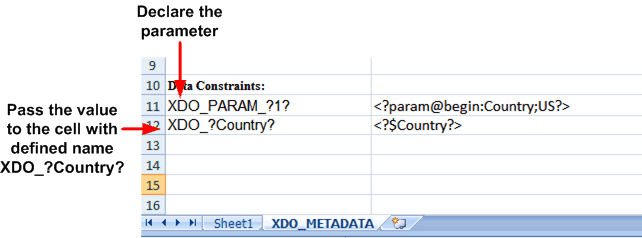


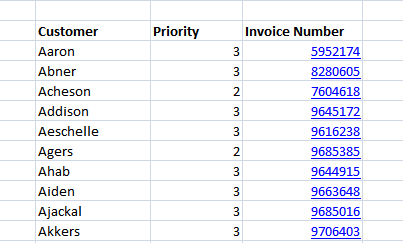
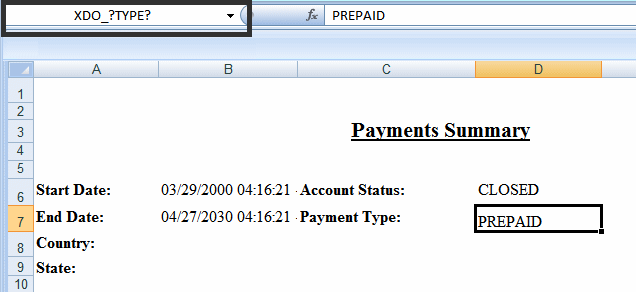

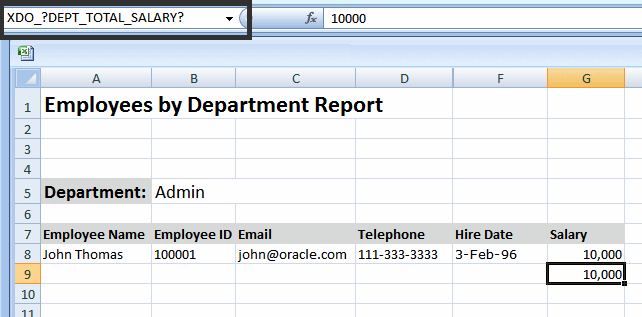


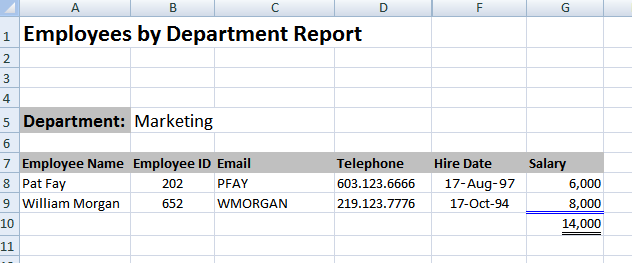
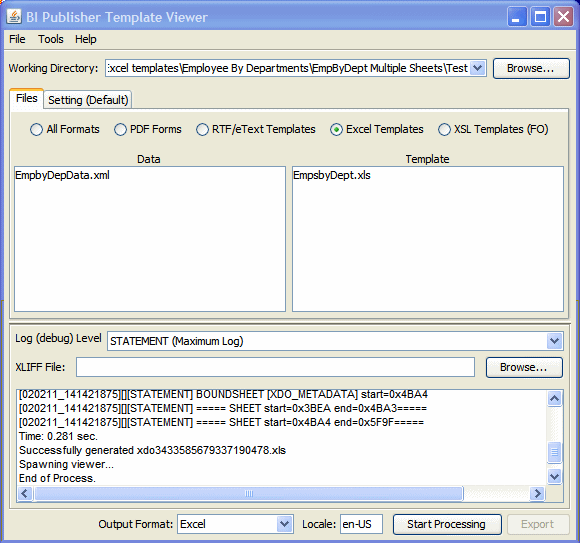
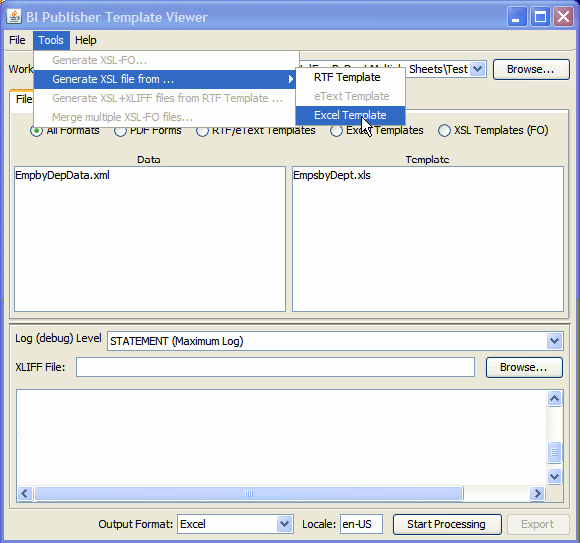
I've found that I can successfully use XDO_SHEET_? and XDO_SHEET_NAME_? to split my data over multiple tabs and I can successfully display parameter values (directly). However I cannot display the parameter values AND split my data at the same time - the parameter values are not displayed! I wonder if this is a limitation of template builder
ReplyDeleteDo you have problems designing a Microsoft Excel template or creating Microsoft Excel formulas? Our professional spreadsheet designers can provide custom made Microsoft Excel spreadsheets, templates and Google Sheet. Our services are made to meet your needs. We have a process to ensure that your customized Excel spreadsheets and custom templates can solve your specific business problems.
ReplyDeleteGoogle Spreadsheet Automation Provider l Create Custom Templates in Excel
Thank you for sharing this useful information, I will regularly follow your blog. Excellent post on Report template design.
ReplyDeleteWith our trustable freelancing site Paperub, you can find your next project and highlight your skills. Our platform provides limitless options for skilled people to grow their careers, develop their networks, if you are looking for hire Excel Experts, Paperub is the best option for find freelancers from all over the world.
ReplyDeleteit's amazing I get very helpful your blog is very good and useful.
ReplyDeleteFree Online Courses